Did you know that the right roof can increase your home's value by up to 10%? Nowadays, homeowners are increasingly leaning toward architectural asphalt shingles for their roofing needs. But why are these shingles gaining such popularity? In this blog post, we'll dive deep into why investing in architectural asphalt shingles is a smart decision for any homeowner. You'll learn about their uniqueness, benefits, financial considerations, and much more. Let's get started!
Architectural asphalt shingles, also known as laminated shingles or dimensional shingles, are a premium alternative to traditional 3-tab shingles. Unlike their flat counterparts, these shingles feature multiple layers of material, giving them a more contoured, three-dimensional appearance. This not only enhances their aesthetic appeal but also boosts their durability.
Architectural asphalt shingles are composed of:
These shingles have evolved significantly since their inception. Initially developed to mimic the luxurious look of slate and cedar shake, advancements in material science have made them even more durable and versatile.
Compared to traditional roof shingles, architectural asphalt shingles offer superior durability. Most traditional 3-tab shingles last between 15 to 20 years, whereas architectural shingles typically boast a lifespan of 30 years or more. Thanks to advancements from brands like Malarkey Shingles and CertainTeed Shingles, these shingles offer exceptional resistance to wind, hail, and even fire.
The visual impact of architectural asphalt shingles cannot be overstated. With a range of designs and colors, they can mimic high-end roofing materials like slate or wood. The 3D effect created by laminated shingles adds depth and character to any home's exterior.
While the initial cost of architectural asphalt shingles may be higher than traditional options, the long-term savings are significant. Lower maintenance costs, fewer repairs, and an extended lifespan make them a cost-effective choice over time.
Certain types of architectural asphalt shingles are designed with reflective capabilities, which can significantly reduce cooling costs in hot climates. This contribution to energy efficiency not only lowers utility bills but also minimizes your home's overall environmental footprint.
Modern manufacturing practices focus on sustainability. Brands like Malarkey Shingles have pioneered the use of recycled materials in their products. Additionally, these shingles are recyclable at the end of their lifespan, reducing landfill waste.
| Investment | Traditional Shingles | Architectural Asphalt Shingles |
| Initial Cost | Lower | Higher |
| Maintenance Costs | Higher (frequent repairs) | Lower (durable) |
| Lifespan | 15-20 years | 30+ years |
| Total Cost Over Time | High | Low |
Investing in architectural asphalt shingles can significantly increase your property’s value. Homes with high-quality roof shingles are more attractive to potential buyers, potentially leading to quicker sales and higher offers.
Many homeowners hesitate due to the upfront costs. However, there are various financing options available, including specialized home improvement loans and government incentives for energy-efficient renovations for residential roofing projects. Additionally, some roofing contractors offer flexible payment plans.
Leading roofing experts at IBEX Roof recommend architectural asphalt shingles as the go-to for both new constructions and roof replacements. These shingles offer unparalleled durability and aesthetic appeal, making them a top choice for discerning homeowners looking to invest in a new roof.
| Feature | Architectural Asphalt Shingles | Metal | Wood |
| Durability | High | Very High | Moderate |
| Aesthetic Appeal | High (variety of designs and colors) | Moderate | High (natural look) |
| Cost | Moderate | High | High |
| Maintenance | Low (less frequent repairs) | Low | High (requires regular treatment against pests and rot) |
Selecting a reputable roofing contractor is crucial for the longevity of your roof. Look for contractors with:
Schedule regular roof inspections to catch any potential issues early. Look for signs of wear and tear such as missing granules or lifting shingles.
Keep your roof clean by removing debris and ensuring proper drainage. While minor repairs can be DIY projects, always consult a professional for significant issues to maintain the integrity and warranty of the roof.
Investing in architectural asphalt shingles is a wise decision for any homeowner looking to combine durability, aesthetic appeal, and long-term savings. With options like Malarkey Shingles and CertainTeed Shingles, you're not just improving your home's appearance but also enhancing its value and energy efficiency. If you're considering a roofing project, contact IBEX Roof for expert advice and top-notch installation services.
To recap, architectural asphalt shingles are a worthwhile investment for multiple reasons:
Architectural asphalt shingles are thicker, with multiple layers of material, which enhances their durability and lifespan.
Laminated shingles (another name for architectural shingles) have a layered, three-dimensional appearance which is both aesthetically pleasing and functionally more durable than 3-tab shingles.
Yes, multiple financing options are available, including home improvement loans and sometimes incentives for energy-efficient upgrades. At IBEX Roof, we can guide you through the best financing options for your roofing project.
Look for contractors who have strong reviews, proper licensing, and experience with architectural asphalt shingles. Companies like IBEX Roof provide detailed consultations and professional installations.
When it comes to choosing roofing materials, it’s essential to consider not only the upfront costs but also the long-term benefits. With architectural asphalt shingles, you're investing in a product that not only protects your home but also increases its value and aesthetic appeal.
At IBEX Roof, we specialize in providing high-quality roofing solutions tailored to meet your needs. We work with top brands like Malarkey Shingles to ensure you get the best products available.
Contact IBEX Roof for a comprehensive consultation. Our experienced team will help you weigh your options, understand the benefits, and provide you with a roofing solution that’s both cost-effective and enduring.
By investing in architectural asphalt shingles, you're making a choice that will benefit you and your home for years to come. Their resilience, beauty, and cost-efficiency make them a standout option for discerning homeowners. Contact IBEX Roof today to find out how we can help you with your roofing needs and experience the difference of high-quality roof shingles.
Thank you for reading, and here's to a beautiful, long-lasting roof over your head!
Have you ever gazed up at a roof and marvelled at the intricate web of components that come together to form a protective shield over our heads? The world of roofing is indeed a fascinating one, filled with terminology and structures that play crucial roles in ensuring the safety and durability of a building. In this blog post, we will delve into the different parts of a roof, explore key components, and unravel the intricate terminology that defines this integral aspect of construction.
At its core, a roof is a vital component of any building, providing protection from the elements and shelter for its occupants. Understanding the basic structure of a roof is essential for appreciating the roles of its various components. Let's start by looking at the fundamental elements that make up a roof structure:
The roof deck is the base layer of the roof, providing a flat surface for other roofing materials to be applied to. It plays a crucial role in supporting the weight of the roofing materials and protecting the underlying structure. Here are some common materials used for roof decking:
| Material | Description |
| Plywood | Strong and versatile, suitable for a wide range of roofing applications |
| OSB (Oriented Strand Board) | Affordable and commonly used as roof decking material |
| Metal Panels | Durable and lightweight, ideal for certain roofing systems |
The underlayment is a waterproof barrier installed directly onto the roof deck, providing an additional layer of protection against moisture infiltration. Different types of underlayment materials offer varying levels of waterproofing and durability. Some popular choices include:
Roof trusses are structural frames that support the roof's weight and distribute it evenly across the walls of a building. They play a crucial role in maintaining the stability and integrity of the roof structure. Common types of roof trusses include:
The exterior components of a roof, such as shingles and eaves, are visible elements that contribute to the overall aesthetics and functionality of the roofing system. Let's explore these components in more detail:
Shingles are the outermost layer of the roof, serving as a protective barrier against weather elements. They come in various materials, shapes, and colors, offering different levels of durability and visual appeal. Common types of roof shingles include:
The eaves are the edges of the roof that overhang the walls of a building. They play a crucial role in directing water away from the structure and preventing damage to the walls and foundation. Proper eaves maintenance is essential for ensuring the longevity of the roof and the building it protects.
In addition to the components mentioned above, several key terms are essential for understanding the anatomy of a roof. Let's explore two crucial roofing terminologies:
The ridge is the highest point of the roof where two opposing roof slopes meet. Ridge vents, installed along the ridge line, facilitate air circulation and prevent moisture buildup in the attic space. Proper ridge ventilation is crucial for maintaining a healthy and energy-efficient roofing system.
Flashing is a waterproof material used to seal joints and transitions on a roof, such as chimney intersections and valleys. It prevents water intrusion and ensures a watertight seal at vulnerable areas of the roof. Common types of flashing materials include:
Understanding the parts and components of a roof is essential for homeowners, contractors, and roofing professionals alike. By familiarizing yourself with the terminology and structures that make up a roof, you can better appreciate the complexity and importance of this integral building element. Whether you're admiring a roof diagram or planning a roofing project with IBEX Roof, the knowledge gained from this exploration will empower you to make informed decisions and ensure the longevity of your roofing system. Embrace the beauty and functionality of roof components, and let your understanding of roofing parts guide you towards a safer and more resilient home.
For homeowners who want their roofs to last a long time, look good, and last a long time, architectural shingles have become a popular choice. But even though there are many roofing choices, there is one big question that everyone wants to know: How long do architectural roof shingles really last?
As roofing experts, we're going to go into great detail about how long architectural shingles last, what makes them last or not, how to spot damage and wear, and important tips to make them last longer. So, let's figure out how long architectural roof shingles last and give you the information you need to protect and take care of your home's most important asset: the roof.
To begin our discussion of how long architectural roof shingles last, let us first look at what makes them different from regular asphalt shingles. Architectural shingles, which are also called laminated or dimensional shingles, are very durable and have interesting design features. This makes them a popular choice for people who want to make their homes look better from the street.
Architectural shingles are different from asphalt shingles because they are made of multiple layers. This gives them a three-dimensional look that resembles that of traditional roofing materials like cedar or slate. This not only makes the roof look better, but it also makes it last longer and be more durable.
The longevity of architectural roof shingles is influenced by a myriad of factors, with key considerations including:
| Climate Condition | Impact on Lifespan |
| Extreme Heat | Accelerates Aging |
| Cold Temperatures | Risk of Cracking |
| High Winds | Potential Damage |
| Excessive Rainfall | Water Damage |
When contemplating the average lifespan of architectural roof shingles, homeowners can generally expect these premium shingles to endure for approximately 20 to 30 years. However, this timeframe can vary based on factors such as climate, installation quality, maintenance diligence, and the brand or type of shingles selected.
To offer a broader perspective on the lifespan of architectural shingles, let's explore a comparison of popular shingle types and their anticipated longevity:
| Shingle Type | Lifespan Range |
| 3-Tab Asphalt | 15-20 years |
| Architectural Asphalt | 20-30 years |
| Metal Roofing | 30+ years |
| Wood Shakes | 20-25 years |
| Slate Roofing | 50+ years |
As architectural roof shingles age, they may exhibit visible signs of wear and damage that signal the need for inspection and potential replacement. Common indicators of shingle deterioration include:
When these signs become apparent, prompt action is crucial to prevent water infiltration, structural damage, and costly repairs. Engaging a reputable roofing contractor for a thorough inspection and evaluation can help address issues before they escalate.
To maximize the longevity of architectural roof shingles and safeguard the structural integrity of your home, consider the following proactive measures:
By adopting these proactive maintenance practices and investing in quality materials, homeowners can enhance the lifespan of their architectural roof shingles and preserve the beauty and functionality of their roofs for years to come.
When determining whether it's time to replace roof shingles rather than repair them, homeowners should consider various factors such as the extent of damage, age of the roof, and overall condition. Consulting a trusted roofing contractor for a comprehensive assessment can help in making an informed decision regarding roof replacement.
While repairs may suffice for minor issues, extensive damage or an aging roof may warrant a full roof replacement to ensure long-term structural integrity and protection. Investing in a new roof with premium architectural shingles can provide peace of mind and enhance the value of your home.
Conclusion
In conclusion, the lifespan of architectural roof shingles is influenced by a myriad of factors, from climate conditions to maintenance practices, installation quality, and shingle type. By understanding these crucial elements and taking proactive steps to care for your roof, you can prolong the life of your architectural shingles and preserve the beauty and functionality of your home.
As experts in residential roofing, we emphasize the importance of regular inspections, timely repairs, and quality materials in safeguarding your roof against wear and damage. By prioritizing the maintenance and longevity of your roof, you can enjoy a durable, aesthetically pleasing architectural roof that enhances the curb appeal of your property while providing reliable protection for years to come.
Remember, a well-maintained roof is not just a shelter; it's an investment in the longevity and value of your home. So, whether you're considering a new roof installation or seeking to extend the lifespan of your existing architectural shingles, trust in the expertise of a professional roofing contractor to guide you through the process and ensure the integrity of your roofing system.
If you have any questions or require assistance with your residential roofing needs, feel free to reach out to us. Your roof's lifespan is in your hands – let's work together to protect and preserve it for generations to come.
When it comes to roofing, installing roof flashing correctly is an important step that is often missed. Understanding the right way to install roof flashing can make all the difference, whether you have a leaky roof or just want to make your roofing system last longer. This blog post will tell you everything you need to know about roof flashing, from the different kinds of flashing to how to install them and keep them in good shape.
Roof flashing is a thin, waterproof material that is put on the edges, transitions, and joints of your roofing system to keep water out. It protects against water getting into weak spots and makes sure there is a watertight seal.
There are several types of roof flashing commonly used in roofing projects, including:
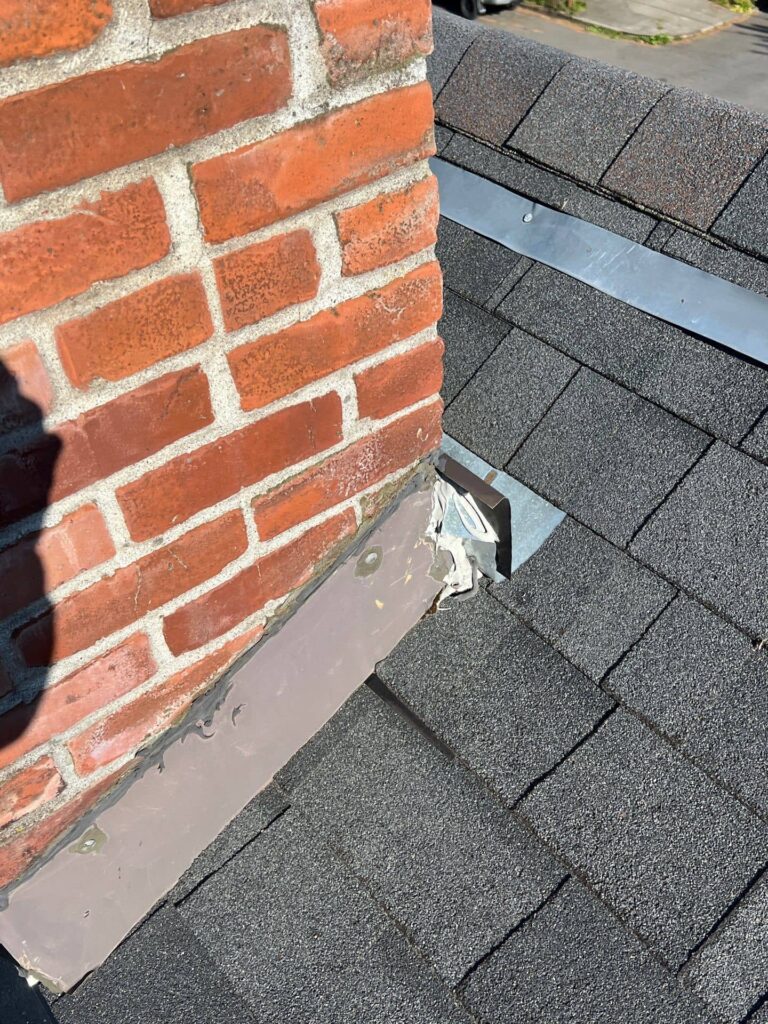
Proper installation of roofing flashing is essential for several reasons:
When it comes to flashing installation, using high-quality materials and following industry best practices is key to ensuring a durable and reliable roofing system.
Before you begin installing roof flashing, gather the following tools and materials:
Proper installation of roof flashing requires attention to detail and precision. Follow these steps to ensure a watertight seal:
| Steps | Description |
| Step 1: Preparation | Inspect the roof and identify areas that require flashing. Clean the surface and ensure it is free of debris. |
| Step 2: Cutting | Measure and cut the flashing material to the appropriate size and shape for the area you are flashing. |
| Step 3: Installation | Secure the flashing in place using roofing nails or screws. Ensure proper overlap and alignment with adjacent materials. |
| Step 4: Sealing | Apply roofing cement or sealant to seal the edges and seams of the flashing, creating a watertight barrier. |
| Step 5: Inspection | Check the flashing for any gaps or loose areas. Make any necessary adjustments to ensure a secure installation. |
To ensure the longevity and effectiveness of your roof flashing, avoid these common mistakes:
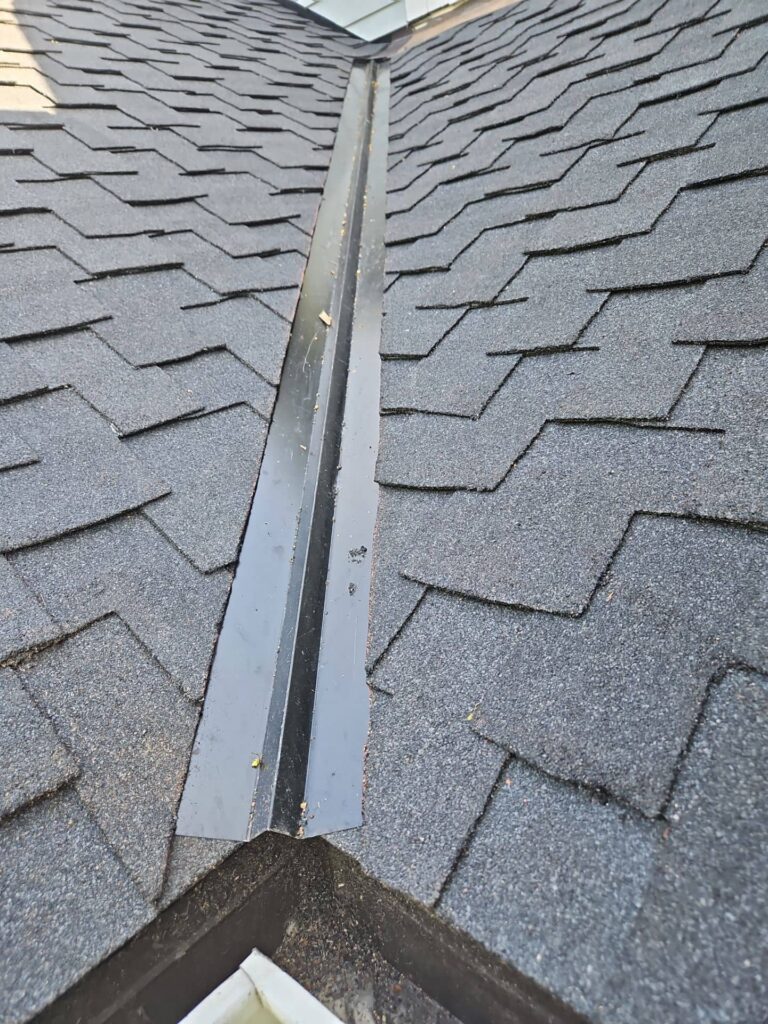
Regular maintenance is key to ensuring your roof flashing remains effective over time. Here are some tips for maintaining your roof flashing:
While some homeowners may opt for a DIY approach to flashing installation, hiring a professional roofer can offer several benefits:
Before deciding whether to tackle a flashing installation project yourself or hire a professional, consider the complexity of the job and your level of expertise in roofing projects.
In conclusion, proper roof flashing installation is a critical component of maintaining a watertight and durable roofing system. By understanding the various types of flashing, following the correct installation steps, and implementing regular maintenance practices, you can ensure your roof remains protected for years to come.
Remember, when it comes to your roof's health, investing in quality flashing roofing installation is a smart choice that can save you time, money, and hassle in the long run. Whether you opt for a DIY approach or hire a professional, prioritize the integrity of your roof flashing for a secure and leak-free home.
If you have any questions or need assistance with your roof flashing repair or installation, feel free to reach out to IBEX Roof for expert guidance and assistance.
When it comes to selecting the ideal roofing material for your home, the choice between Asphalt and Composition Shingles often arises. Each type of shingle has its unique characteristics and advantages, catering to different needs and preferences. In this blog post, we will delve deep into the differences between Asphalt and Composition Shingles, helping you make an informed decision for your roof composition.
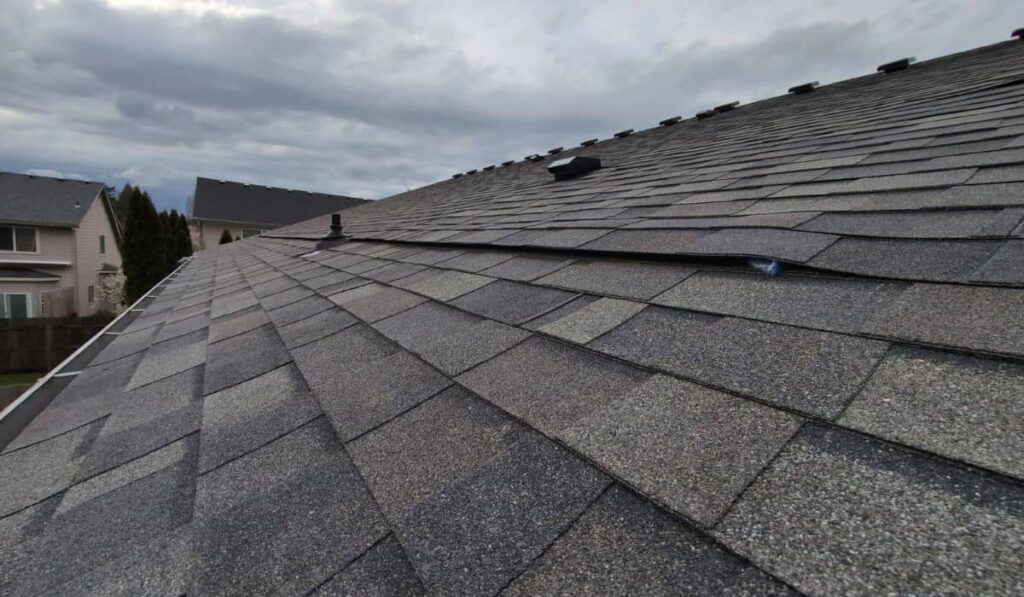
Asphalt shingles are among the most popular roofing materials due to their affordability and ease of installation. They come in two main types: 3-tab Shingles and Architectural Shingles.
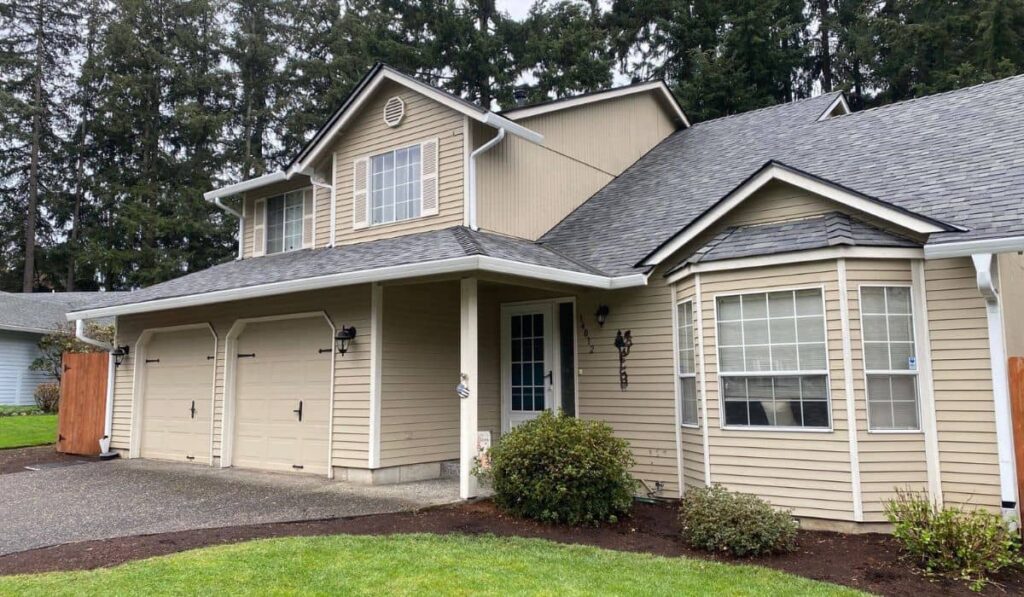
Composition shingles, also known as composite shingles, offer durability and fire resistance, making them a popular choice for homeowners seeking long-lasting roofing solutions.
To further understand the differences between Asphalt and Composition Shingles, let's compare them based on key factors:
| Factors | Asphalt Shingles | Composition Shingles |
|---|---|---|
| Cost | Affordable | Higher initial cost |
| Durability and Longevity | Shorter lifespan | Durable and long-lasting |
| Environmental Impact | Less eco-friendly | Environmentally friendly options available |
| Maintenance Requirements | Minimal maintenance needed | Regular inspection and maintenance required |
When deciding between asphalt and composition shingles for your roof composition, consider the following factors:
On average, composition shingle roofs can last between 20 to 30 years. However, the lifespan of a composition shingle roof can vary depending on factors such as the quality of the shingles, installation techniques, climate, maintenance, and environmental factors. Proper maintenance and regular inspections can help extend the lifespan of a composition shingle roof.
The cost of a composition roof can vary depending on a variety of factors such as the size of the roof, the quality of materials used, and the location of the property. On average, the cost of a composition roof can range from $10,000 to $15,000 or more. It is recommended to get quotes from multiple contractors to get an accurate estimate for your specific roofing needs.
Choosing between Asphalt and Composition Shingles can be a challenging decision. Consulting with a professional roofing contractor can help you assess your specific needs and make an informed choice.
In conclusion, both Asphalt and Composition Shingles offer unique benefits for your roof composition. By weighing the pros and cons of each type and considering your individual requirements, you can select the best roofing material for your home.
Remember, the roof is an essential part of your property, providing protection and enhancing the overall aesthetic appeal. Take your time to research and consult experts before making a final decision on Asphalt vs. Composition Shingles for your roofing needs.
For more insights on shingles roofing, roof shingles types, and luxury asphalt shingles, stay tuned for our next blog post!
Would you prefer a composition shingle roof or an asphalt shingle roof? Let us know in the comments below if you're considering roof replacement or any roofing services!
Choosing the right roofing material for your home can be a daunting task. With so many options available, it can be difficult to decide which one is best suited for your needs. In this blog, we will discuss the 8 most common roofing materials available, their advantages and disadvantages, and how to choose the best one for your home.
The roof is one of the most important components of a building, protecting it from the elements and ensuring its structural integrity. Choosing the right roofing material is crucial to ensuring the longevity and functionality of your roof. There are many factors to consider when selecting a roofing material, including cost, durability, aesthetics, and environmental impact. In this blog, we will explore the 8 most common roofing materials available, and provide guidance on selecting the best one for your home.

Asphalt shingles are the most popular roofing material in the United States, and for good reason. They are relatively inexpensive, easy to install, and come in a wide range of colors and styles. Asphalt shingles can last up to 30 years with proper maintenance, and are resistant to fire and wind damage. However, they are not as durable as some other roofing materials, and can be prone to cracking and warping in extreme temperatures.
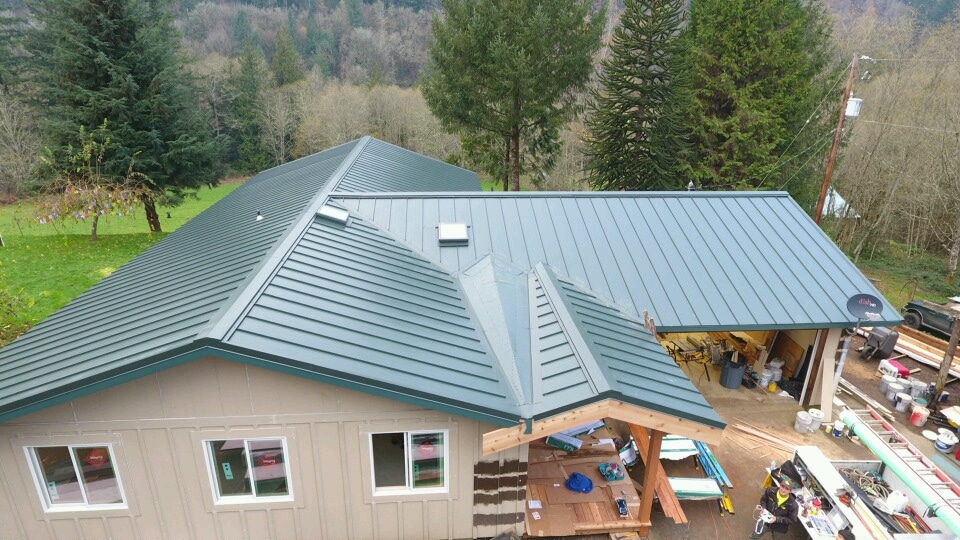
Metal roofing is a durable and long-lasting roofing material that is becoming increasingly popular. It is lightweight, fire-resistant, and can last up to 50 years with proper maintenance. Metal roofing is available in a variety of colors and styles, and is highly resistant to wind and rain damage. However, it can be more expensive than some other roofing materials, and can be noisy during heavy rainfall.
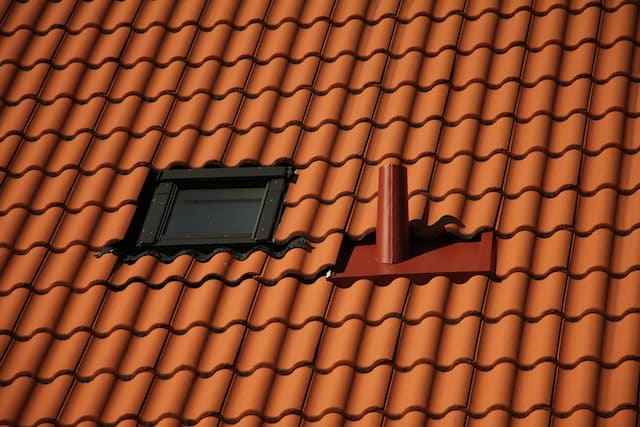
Clay tiles are a popular roofing material in warm and sunny climates, such as the Southwest United States. They are highly durable, fire-resistant, and can last up to 100 years with proper maintenance. Clay tiles are also available in a range of colors and styles, and are highly resistant to wind and rain damage. However, they are heavy and require a strong support structure, and can be prone to cracking and chipping in extreme temperatures.
Concrete tiles are a durable and long-lasting roofing material that is similar to clay tiles in many ways. They are fire-resistant, resistant to wind and rain damage, and can last up to 50 years with proper maintenance. Concrete tiles are available in a variety of colors and styles, and are less expensive than clay tiles. However, they are also heavy and require a strong support structure, and can be prone to cracking and chipping in extreme temperatures.
Slate roofing is a high-end roofing material that is known for its beauty and durability. It can last up to 100 years with proper maintenance, and is highly resistant to wind and rain damage. Slate roofing is available in a range of colors and styles, and is fire-resistant. However, it is also heavy and requires a strong support structure, and can be expensive to install.
Wood shingles and shakes are a traditional roofing material that is still popular today. They are highly durable and can last up to 50 years with proper maintenance. Wood roofing is also eco-friendly and has a natural, rustic look. However, it is not fire-resistant and can be prone to rot, mold, and insect damage over time. Additionally, wood roofing can be more expensive to install and maintain than some other roofing materials.
Synthetic roofing is a newer roofing material that is becoming increasingly popular due to its affordability and durability. It can mimic the look of natural materials like wood and slate, but is much lighter and easier to install. Synthetic roofing is highly resistant to wind and rain damage, and can last up to 50 years with proper maintenance. However, it is not as eco-friendly as some other roofing materials, and may not have the same aesthetic appeal as natural materials.
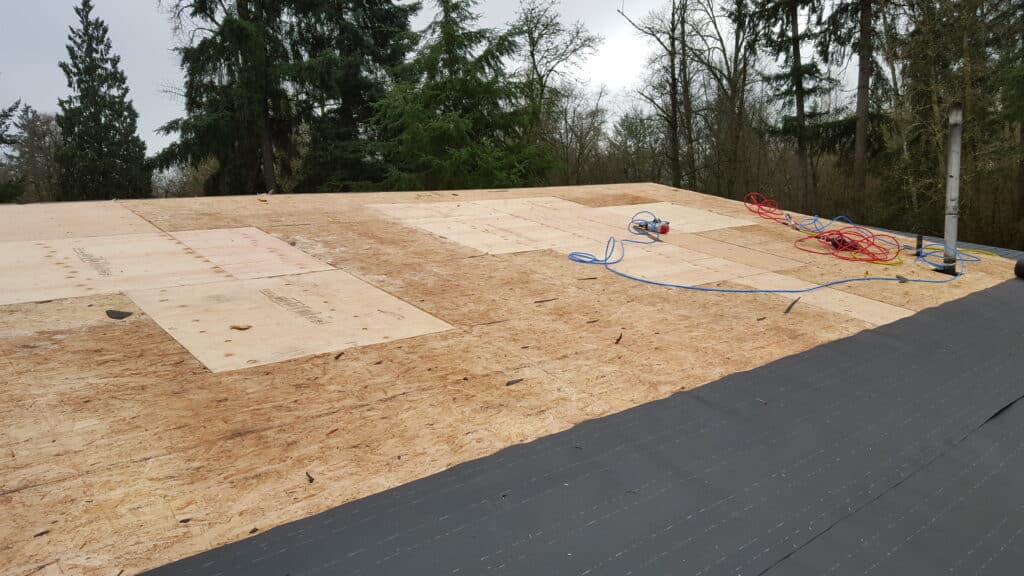
Built-up roofing, also known as BUR, is a roofing material made of layers of asphalt and other materials. It is commonly used on flat or low-slope roofs and is highly durable and resistant to weather damage. BUR can last up to 30 years with proper maintenance, but can be prone to leaking if not installed correctly.
Choosing the right roofing material for your home is an important decision that can impact the longevity and functionality of your roof. By understanding the advantages and disadvantages of each material, you can make an informed decision that meets your needs and budget.
Asphalt shingles can last up to 30 years with proper maintenance.
Some of the most eco-friendly roofing materials include metal, slate, and clay tiles.
The cost of installing a metal roof can vary depending on the size of the roof and the type of metal used, but can range from $7 to $12 per square foot.
Clay tiles can last up to 100 years with proper maintenance.
It is possible to install synthetic roofing over existing shingles, but it is generally recommended to remove the old shingles first for best results.
Are you building a new roof or reconstructing the old one? We’re sure you’ve put a lot of thought into getting the perfect material for your shingles for proper ventilation, insulation, and waterproofing. However, with this comes another important question: Do I need to install dark or light shingles?
We say, go for the color you want, whether dark or light, based on the overall paint color of your house. However, many people are of the opinion that light shingles are better for energy efficiency. How true is that? And what happens if you get dark shingles instead of light ones? Let’s explore!
We have made side-by-side comparisons of dark and light shingles based on certain factors:
It is said that the color of your shingles can affect the temperature of your home. For instance, light-shaded shingles deflect sunlight, dropping the internal temperature by a significant level. On the other hand, dark-colored shingles absorb heat and keep your house warm. While it’s possible there may be some tiny truth to these observations, it’s not enough to make a difference. Insulation is the first line of defense in creating an energy-efficient home. While it’s important to have a roof that is well-ventilated, the color of your roof has little effect on how comfortable your home is.
When choosing the color of shingles for your roof, you have to consider the overall paint color of your house. While many believe light shingles go best with light-colored houses and dark shingles look great on dark-colored houses, we disagree! We believe that there should be a contrast. For instance, if your house is painted in a lighter shade, dark shingles would look more pronounced, and vice versa. However, there is no hard and fast rule about choosing the color of shingles. You can go for whichever color you like, based on your taste and preference.
Another point of debate between dark and light shingles is their durability. People believe that dark shingles have a longer lifespan compared to light shingles. Mainly because darker shades can tolerate more heat, live through snow, don’t fade quickly, and are good at hiding imperfections. However, there’s no proof to back this fact. Color has nothing to do with longevity. If your roof is properly ventilated and has a place from where the heat can escape, it will last longer, regardless if it has light or dark shingles.
Dark shingles or light shingles? Actually, we even offer options that have a combination of both. We think your choice of the color of shingles depends on your personal preference and what looks aesthetically pleasing with the overall paint color of your house.
If you have always dreamed of a house with red shingles, go for it! If you think light grey or white would make your house appear minimalistic and chic, get light shingles! If you feel blended colors like dark grey go better with the style of your home, they really do! Just go with whatever is suitable for your home. Regardless of which option you choose, our team at IBEX Roof will make sure that your home looks great.
The Pacific Northwest is known for having a temperate oceanic climate with lots of rain and wind. Therefore, PNW residents usually build roofs that can handle moisture and have good drainage. While there are many types of roofs, including concrete, cedar shakes, metal, slate, and asphalt, the 3 most popular roofing types in PNW are:
Let’s go over the properties of each type and see why they are so popular among the people of PNW.
Asphalt shingles are the most common roofing option in the Pacific Northwest. They are considered the most versatile type of roofing, available in a variety of different colors and adding a clean and aesthetic look if installed correctly. To build an asphalt roof, you need a fiberglass mat, on top of which the shingles are installed, and a layer of mineral granules is added as a finishing touch.
There are three main types of asphalt shingles:
Even just a decade ago, when people thought of metal roofs, they would think of a shed or outside buildings. However, metal roofing is becoming quite popular in the Pacific Northwest. This is mainly due to its water-resistant properties and also because it is now available in different colors and styles. Metal roofs are one of the best types of roofing because they are unaffected by rain and snow due to closely interlocked panels. They are lightweight, easy to install, deflect heat, and can last for more than 50 years. Plus, they can also be designed to look like wood shake and slate to make your home look aesthetically pleasing.
Cedar shake roofs have been around for more than 300 years and are another popular roofing type in the PNW. They are the pioneers of roofing, giving your home a luxury look and increasing its value. Cedar roofs are expensive compared to other roofing options, but they have a low maintenance cost, save energy, and provide optimum insulation and deflection. However, cedar roofs are prone to mold growth if not installed correctly. But, if you treat the wood with products designed to keep mold and bacteria at bay, they can easily last for 30 to 50 years with annual maintenance.
Living in the PNW means building roofs impervious to rain and wind. Although you will find houses with several different roofing types, asphalt shingles, metal, and cedar shake roofs are the most viable options in the region. If you’re not sure how to choose a roofing type that suits you best, IBEX Roof is here to help. We can find you the right match based on your budget, maintenance capability, and preference!
Are you tired of dealing with frequent repairs and replacements for your traditional roof? Do you want a roofing solution that is not only durable but also energy-efficient and visually appealing? If so, it may be time to consider a metal roof. Metal roofing has gained increasing popularity in recent years due to its numerous advantages over traditional roofing materials.
In this blog post, we will explore the reasons why metal roofs have become a favorable choice and address common misconceptions associated with them. Read on to discover if a metal roof could be the perfect solution for your home.
Before delving into the benefits of metal roofing, it's important to understand the issues commonly faced with traditional roofing materials, such as asphalt shingles, wood shakes, clay, or concrete tiles. These materials often require frequent repairs or replacements, leading to additional costs and inconveniences.
Wood shakes and tiles are susceptible to rot, warping, and insect damage, making them less durable in the long run. Additionally, clay or concrete tiles are heavy and may require additional structural support for adequate installation.
In recent years, metal roofing has gained significant traction as homeowners seek a reliable and long-lasting roofing option. Let's explore the advantages that have contributed to the rising popularity of metal roofs:
Metal roofs are known for their exceptional durability. Unlike traditional roofing materials, metal roofs can withstand extreme weather conditions, including high winds, heavy snowfall, and hail. With a properly installed and maintained metal roof, you can expect it to last up to 50 years or more. This longevity surpasses that of asphalt shingles, which typically last around 20 to 30 years.
Metal roofs are highly energy-efficient, helping homeowners reduce their carbon footprint and energy bills. The reflective properties of metal significantly reduce heat absorption, keeping your home cooler in hot climates.
This reduces the load on your HVAC system, leading to energy savings. Additionally, metal roofs can be installed with added insulation, further enhancing energy efficiency and comfort.
Gone are the days when metal roofs were limited to industrial or agricultural buildings. Nowadays, metal roofs come in a variety of styles, designs, and colors. You can choose from different metal roof colors to perfectly match the exterior of your home, whether you prefer a classic or contemporary look.
Metal roofs can mimic the appearance of shingles, tiles, or even a sleek standing seam metal roof. The versatility in design ensures that you can achieve the desired curb appeal for your home.
Investing in a metal roof not only offers long-term benefits but also enhances the value of your property. Potential homebuyers recognize the durability and low maintenance aspect of metal roofs, making it an attractive feature when it comes time to sell your home.
One of the myths associated with metal roofs is that they are noisy during rainfall. However, this is not the case. With advancements in insulation and soundproofing technologies, the noise generated by raindrops hitting a metal roof is no louder than that of other types of roofing materials.
Contrary to popular belief, metal roofs are not more prone to lightning strikes compared to traditional roofs. In fact, the non-combustible nature of metal makes it a safe option in areas prone to wildfires. Metal roofs have a Class A fire resistance rating, offering excellent protection.
Apart from their durability and aesthetics, metal roofs boast several environmental benefits:
While the upfront cost of metal roofs may be higher than traditional options like asphalt shingles, the long-term savings they offer outweigh the initial investment. Metal roofs require minimal maintenance, reducing repair costs significantly. Moreover, metal roofs have a longer lifespan, eliminating the need for costly replacements every few decades.
It's also worth noting that some insurance providers offer discounts for homes with metal roofs due to their durability and resistance to weather-related damage. Additionally, certain tax incentives may be available for homeowners who choose to install energy-efficient metal roofs.
Metal roofs can be made from various materials, each with its own advantages and considerations:
| Material | Advantages |
| Standing Seam | - Provides sleek and modern aesthetics |
| - Excellent resistance against water infiltration | |
| - Can accommodate thermal expansion | |
| Metal Shingles | - Resemble traditional roof materials like asphalt shingles |
| - Lightweight and easy to install | |
| Metal Tiles | - Highly durable and long-lasting |
| - Provides a classic, elegant look | |
| Corrugated Metal | - Ideal for agricultural or industrial buildings |
| - Budget-friendly option |
Installing a metal roof requires careful consideration of certain factors:
To ensure the best results, it's essential to work with reputable and experienced contractors for metal roof installation. Improper installation can compromise the performance and durability of the roof.
Regular maintenance involves clearing debris, inspecting for any loose screws or damaged panels, and promptly addressing any issues to prevent further damage. Additionally, applying a metal roof sealant can provide extra protection against leaks and extend the lifespan of your metal roof.
Hearing from others who have switched to metal roofs can provide valuable insight into their experiences. Here are a couple of success stories:
Metal roofs have undeniably established themselves as a superior roofing option, offering durability, energy efficiency, and numerous design possibilities.
Despite initial cost considerations, the long-term benefits outweigh the investment. Additionally, metal roofs contribute to sustainability efforts through recyclability and reduced energy consumption. By choosing a metal roof, you can enjoy peace of mind, aesthetic appeal, and long-lasting protection for your home.
Consider all these factors and consult with a professional to determine whether a metal roof is the right choice for you.
After talking about roof vents all month, we thought it would be a good idea to go over the different roof ventilation options out there. Every house is different and there isn’t a single type of roof vent that works perfectly for every home. It is important for every home to have a properly vented roof, though. Some benefits of having roof vents include:
While there are a few different roof ventilation types available, the three main categories are intake, exhaust, and flappers.
Intake vents allow outside air into your attic or other ventilation spaces. The main types of intake vents we install are bird blocks, edge vents, or smart intake vents.
Bird blocks: These are also known as soffit vents because the vents are located underneath the eaves of your roof. This is only possible if your home has soffits, as some older houses don’t have them at all.
Edge vents: Some homes may not have room for bird blocks underneath their eaves, so an edge vent is the next best solution. Edge vents attach at the lower edge of your roof.
Smart vents: Smart vents combine ridge and soffit venting and are usually installed underneath the first layer of shingles at the edge of your roof. It’s most ideal to install when you’re installing a new roof or replacing an old one.
Intake vents work best when they are paired with exhaust vents. Exhaust vents are what direct airflow from the inside out. Common types of exhaust vents include ridge vents, box vents, and electric attic fans. We do not recommend electric attic fans because they can end up pulling air in from your exhaust vents instead of your intake vents.
Ridge vents: Ridge vents are a popular choice when it comes to exhaust vents because they allow continuous airflow and blend in seamlessly with your roof. They are installed underneath your roof’s ridge cap. These are the way to go if you are installing a brand new roof but are not easy to retrofit on existing roofs.
Box vents: Box vents are more visible on your roof than ridge vents but are easier to install on an existing roof. These are cuts in your roof that have a cover over them. You will need multiple box vents, depending on the size of your home, to ensure proper air exhaustion. Otherwise, your roof may be underventilated.
Flappers are dedicated exhaust vents, usually for bathrooms and kitchens. They only open when you turn on the fan switch so air won’t circulate between your other roof vents. Flappers help exhaust the air from high-moisture rooms out of your attic to prevent mold, mildew, and rot.
Some homes don’t have any ventilation at all when they need it. Other homes might have a few vents installed, but not enough to facilitate adequate airflow. Call IBEX Roof today at 360-218-3104 if you need guidance over different roof ventilation options for your home.